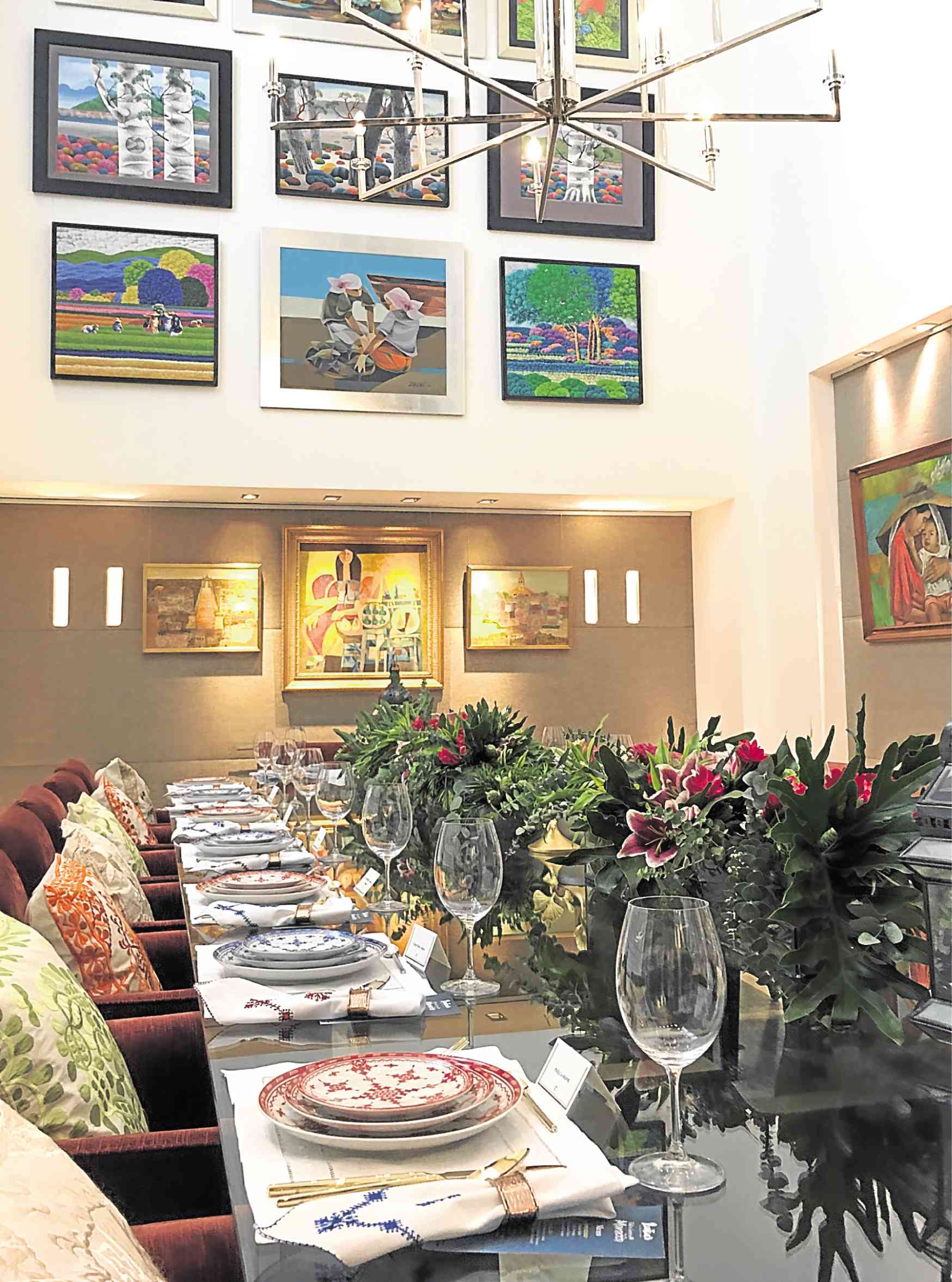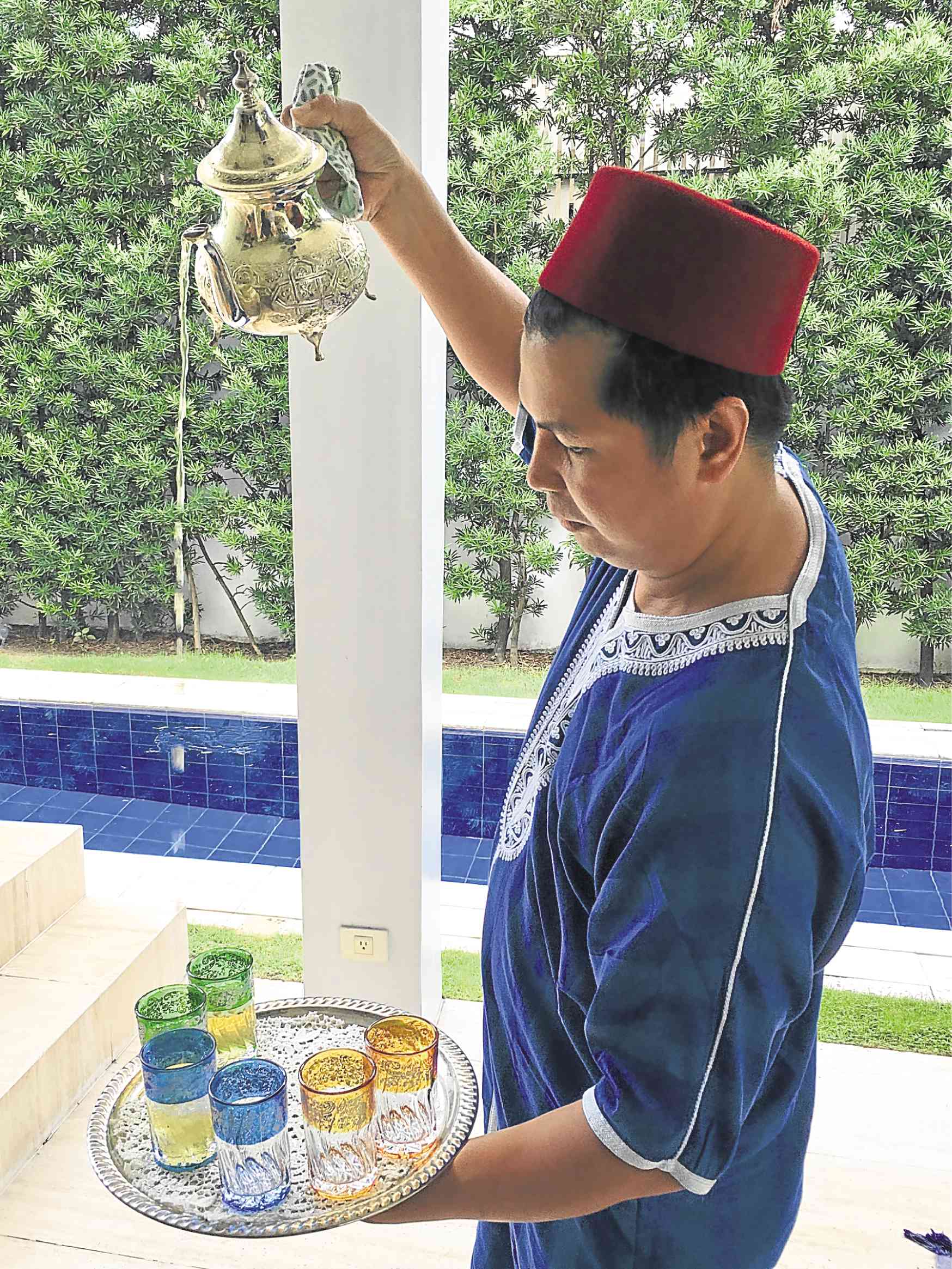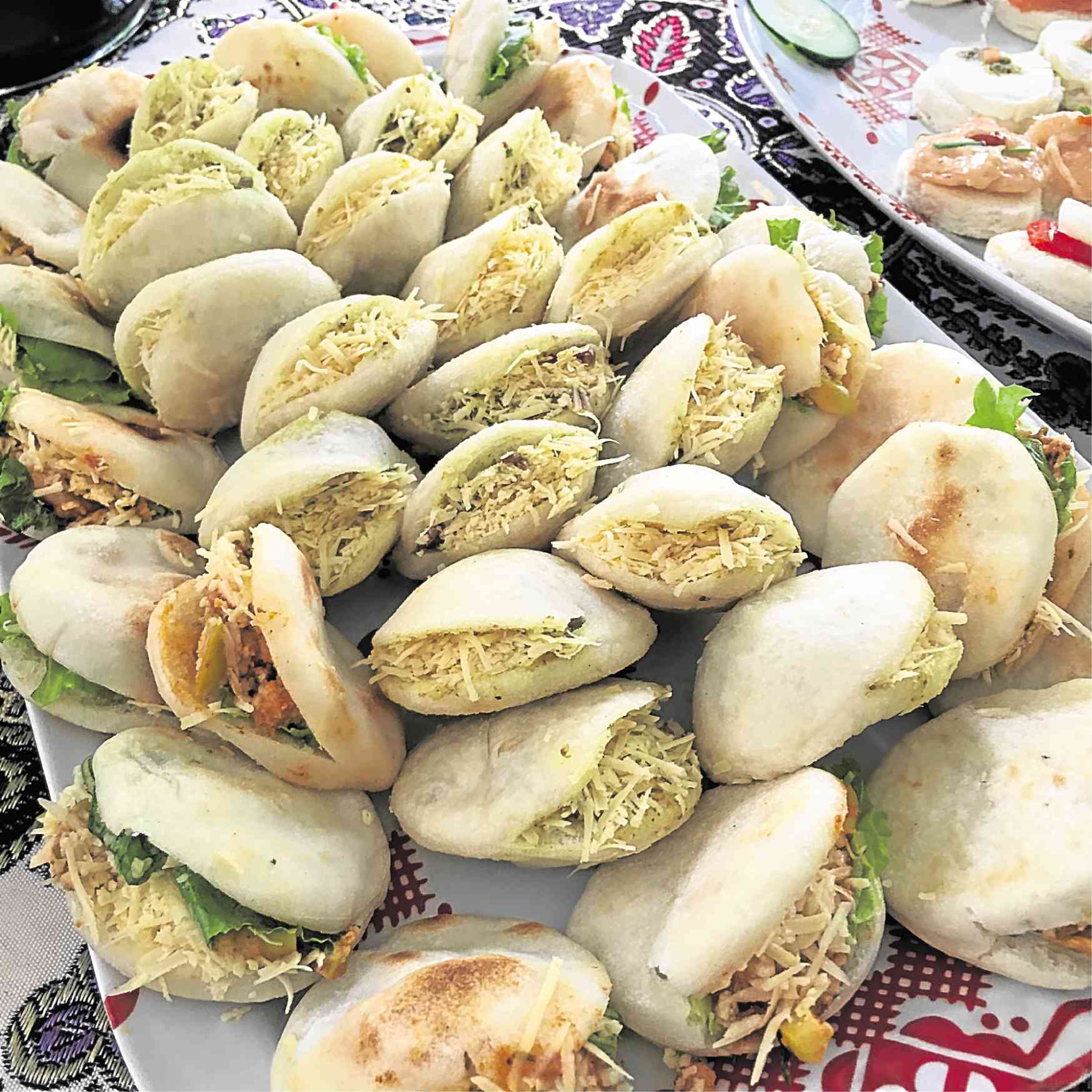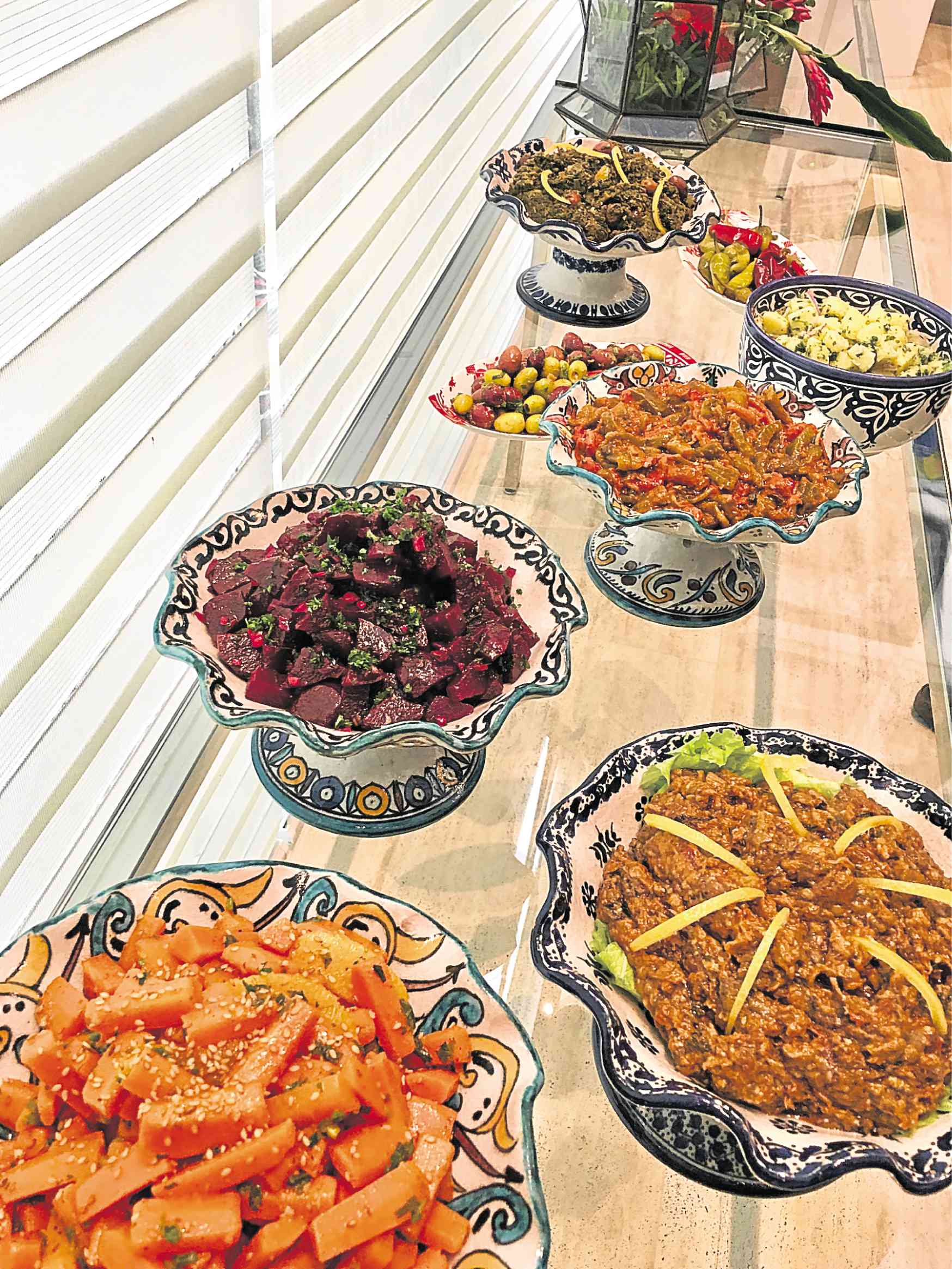
Marilen Tantoco had told us about the first time she tried Rachida Bousta’s cooking. Tantoco and her daughter, Annica, had planned to go out for dinner, but the young Moroccan chef made them try instead her spiced lamb tagine and couscous.
“It was so good, we ended up staying in!” said Tantoco.
That was a few months ago, back in Morocco, where the Tantocos have a home, and Bousta was auditioning for a gig here in Manila. Tantoco, vice president for home merchandising of Rustan’s and honorary consul general of Morocco, needed a chef for Café Casablanca, the pop-up restaurant of Rustan’s’ ongoing Moroccan festival. This is the second year Rustan’s is holding the festival.
Tantoco last Friday opened her Makati home to a select few for lunch, to sample Bousta’s cooking. The menu comprised of dishes the chef will serve at Café Casablanca (5/F, Rustan’s Makati, tel. 8133739 local 280). The café will be around for six months.
Bousta has worked in Dubai and in Marrakech’s La Mamounia, and is assisted here by sous chef Fatima Zara.
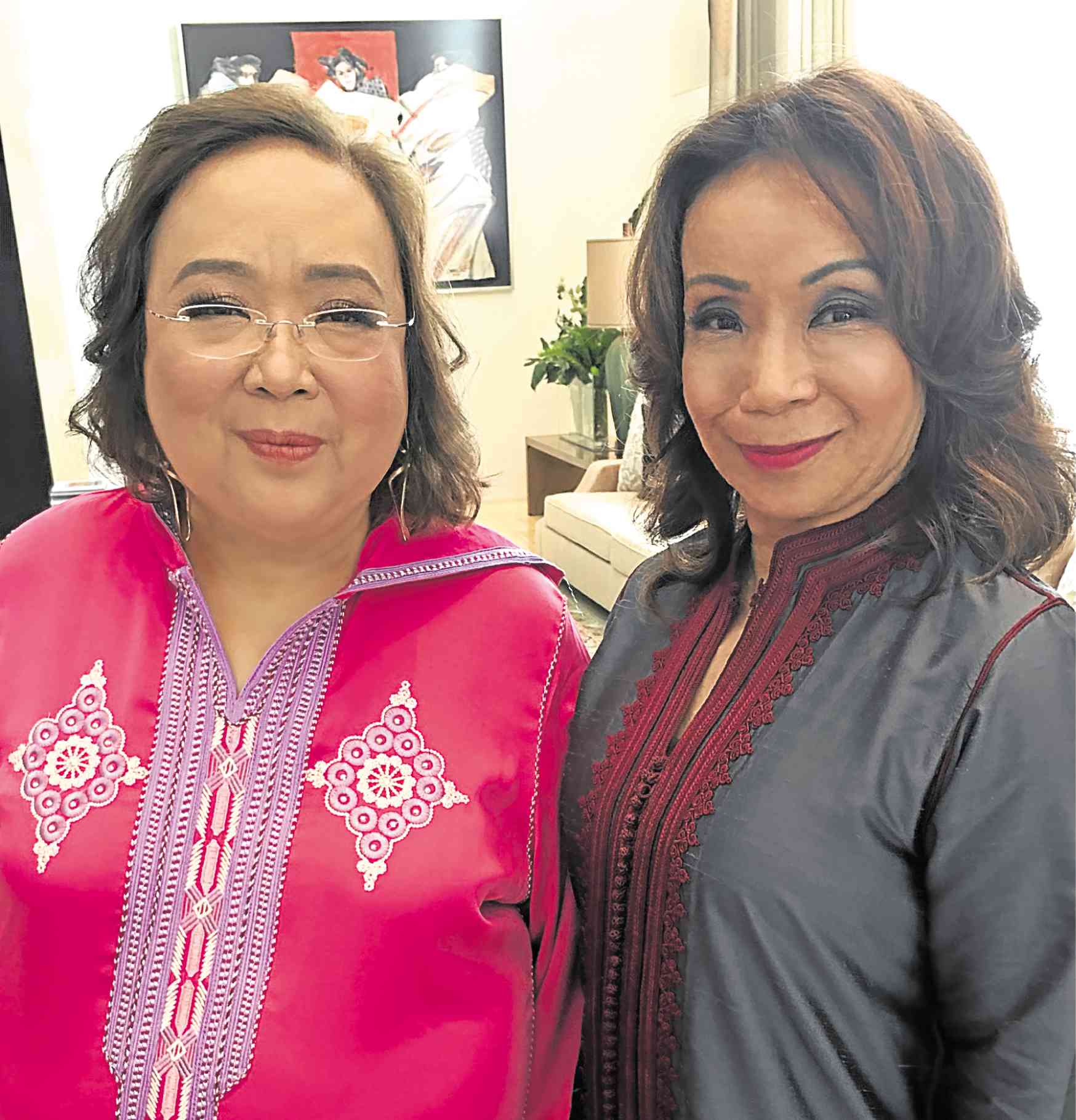
Spices
As guests arrived, a variety of nibblers was passed around. There were the familiar, like the cigar au fromage, fried cheese sticks with parsley, and the bolder-flavored briouate kefta, cumin-spiced minced meat wrapped in phyllo pastry.
(Cumin and other spices like coriander, paprika, turmeric, cinnamon, nutmeg, saffron, cloves and allspice make up the distinct and robust flavor profile of traditional Moroccan cooking, which has Arab, Mediterranean, Spanish Andalusian and Berber influences.)
Food servers wearing Moroccan tunics and fez served traditional sweetened mint tea, poured ceremoniously from a height, said to enhance flavor, into colorful glasses.
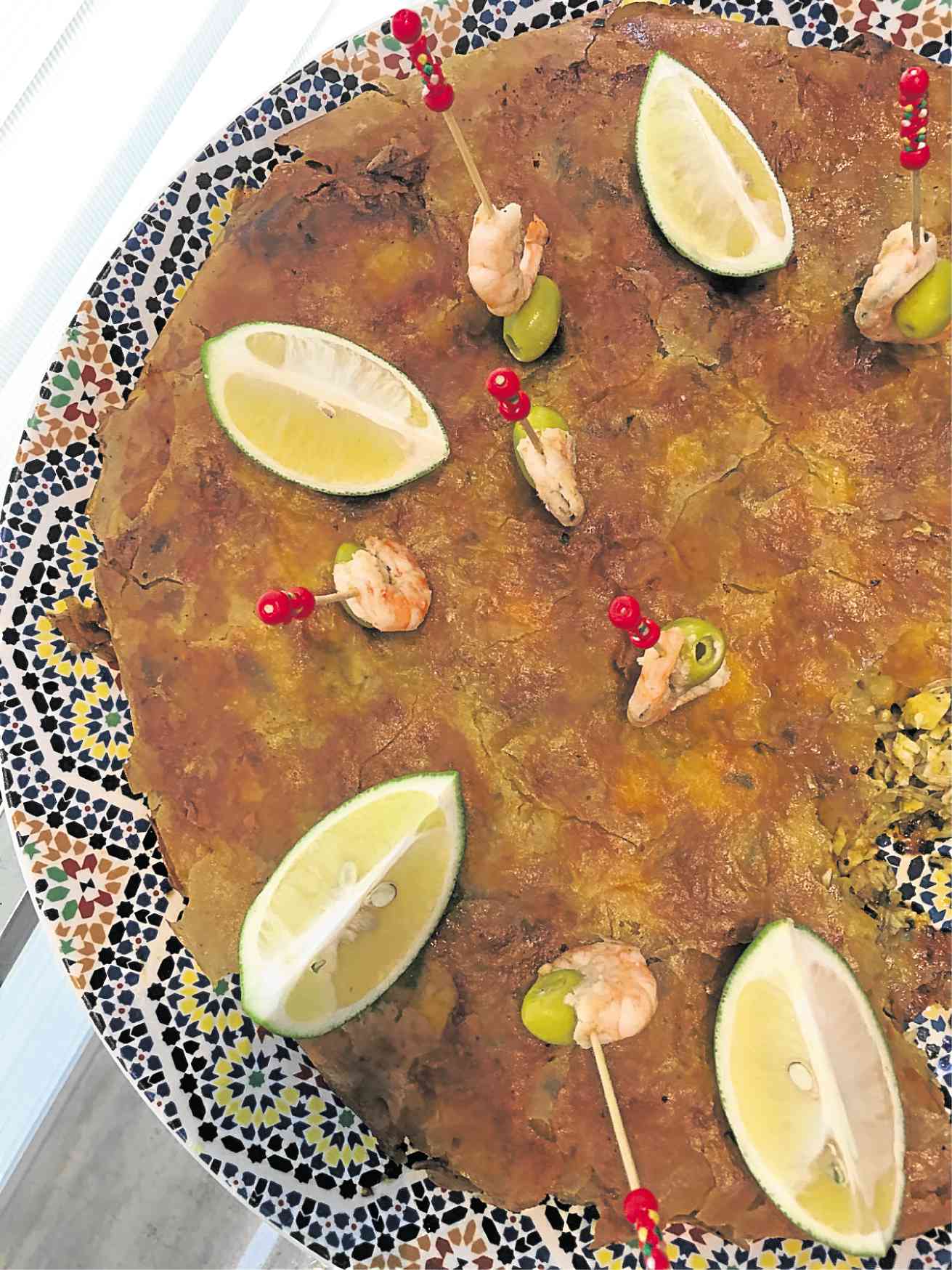
In the dining room, its walls adorned with Tantoco’s impressive art collection, the lady of the house had laid out her prized collection of Moroccan china, from a factory that’s long gone, she told us. She had also laid out her Moroccan hand-embroidered serviettes.
The meal started with a selection of traditional cold salads or meze—carrot bechamel, beets, potato bechamel, olives, zaalouk (chopped eggplant with tomatoes), taktouka (spiced green pepper and tomatoes), bakoula (cooked green salad typically made with mallow, but this version was made with kale)—all light (possibly even healthy) palate teasers that bore only the slightest hints of exotic spices, a contrast to the mains that were to come.
Bousta prepared four mains, two versions of pastilla (or bastilla), chicken and seafood. A Moroccan pastilla is a savory pie, said to be of Andalusian origin, and has versions throughout North Africa. Bousta’s chicken pastilla had a phyllo pastry dough and used large, bone-in chicken chunks, flavored with cumin, coriander and saffron. The fish version used shredded phyllo pastry, with a filling of shrimps, white fish and vermicelli noodles, brightened with juice from lime wedges.
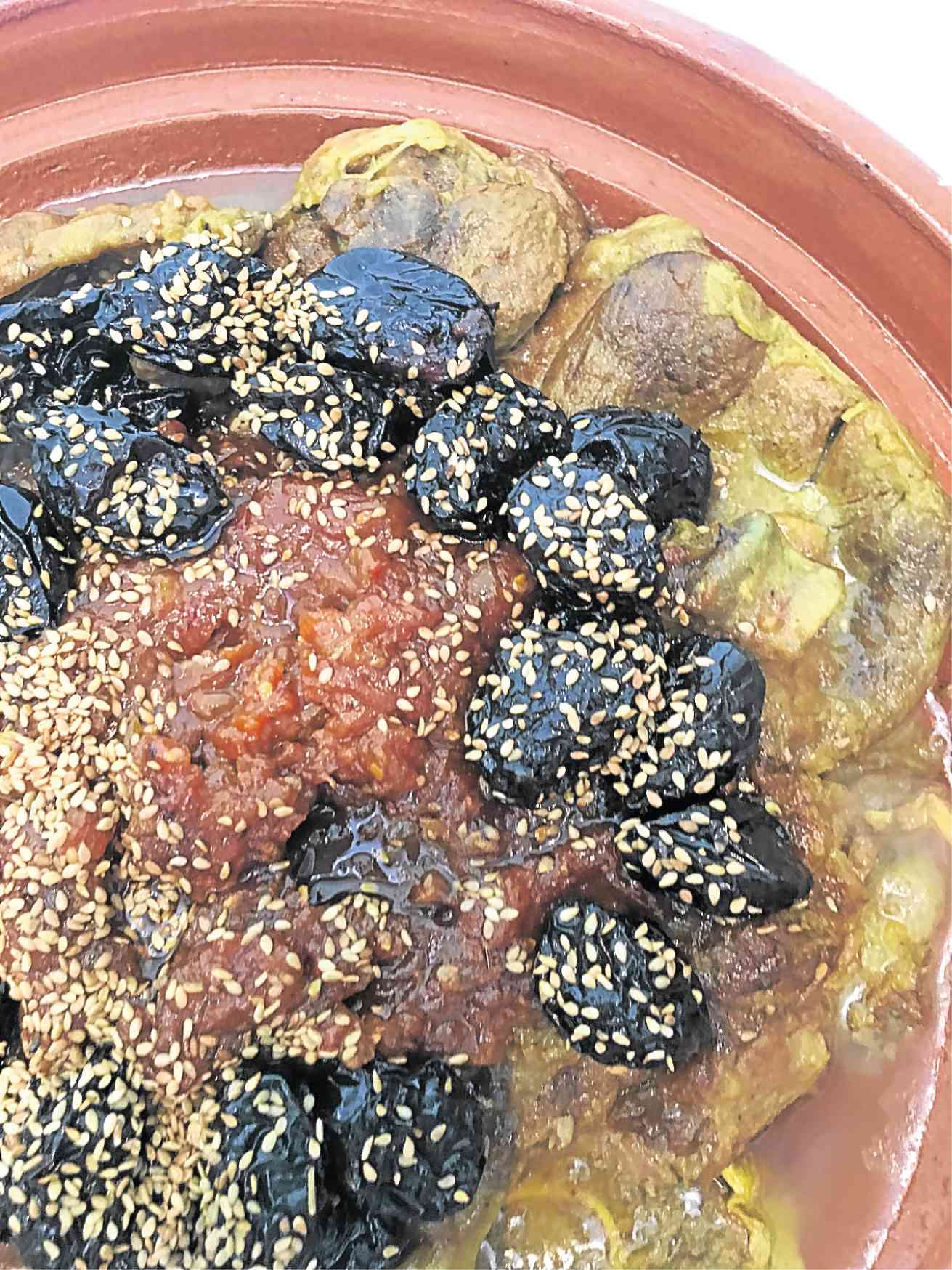
The main event were the vegetable couscous and lamb tagine that Tantoco had so raved about. The meat, stewed in the traditional clay pot with conical lid or tagine, was tender, its flavors contrasted quite nicely with the sweet, chewy prunes, not at all gamey like typical lamb dishes.
Piled high on the couscous were big chunks of vegetables; the pasta grains tasted light, even as they had soaked up all the flavors of the stock they were simmered in.
The chef served a selection of three desserts—pastilla with milk, a crispy peanut crepe; fresh orange slices dusted with cinnamon; and rice pudding with milk—all of which will also be served at Café Casablanca.
